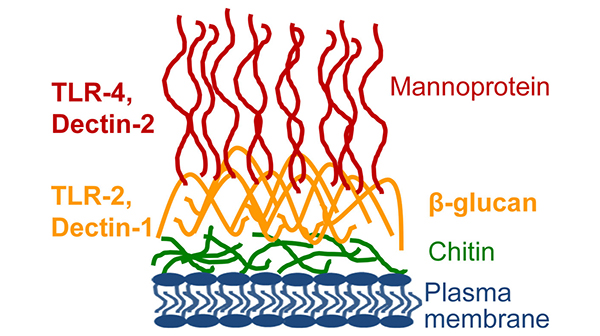Fungal Phenotypes and Vulvodynia: Understanding the Role of β-glucan in Vulvar Inflammation
Vulvodynia, chronic pain localized to the vulvar vestibule, is a devastating disease that severely impairs the quality of life of affected individuals and their partners. Simple activities, such as riding a bicycle or wearing tight pants can elicit long lasting pain. Because the origins of vulvodynia are incompletely understood, there are no currently available medical therapies that address the underlying causes of disease. There is a relationship between the vulvovaginal microbiome and vulvodynia; >70% of patients report the incidence of prior chronic vulvovaginal yeast infection. How yeast infection may lead to chronic pain is a mystery, especially when the overall composition of the microbiome in women with and without vulvodynia does not differ significantly. However, such investigations have focused on identifying microbiome members at the Genus and Species level and have not looked further into the specific characteristics of clinical isolates.
Our research into the mechanisms of vulvodynia has revealed an underlying hypersensitivity to inflammatory stimuli of yeast, bacterial, and viral origin within the painful vulvar vestibule. This appears to be a maladaptive skewing of a natural response aimed to protect the vagina from infection. However, we have not delved further into the specific traits these microorganisms exhibit that impact this response. It is clear that one of the players in this response is the Dectin-1 receptor, which recognizes fungal β-glucan. The response to β-glucan is highly relevant, as it is a major component of the Candida albicans (chief causative agent of vulvovaginal yeast infection) biofilm matrix. Biofilm formation has been strongly associated with chronic or recurrent yeast infection. Therefore, the goal of this investigation is to evaluate the role of fungal β-glucan production in the pro-nociceptive proinflammatory responses of the vulvar vestibule using our fibroblast model.
